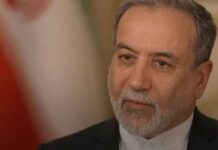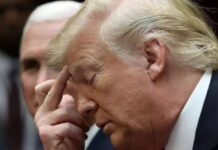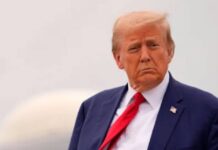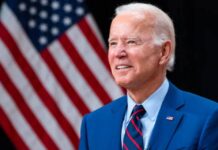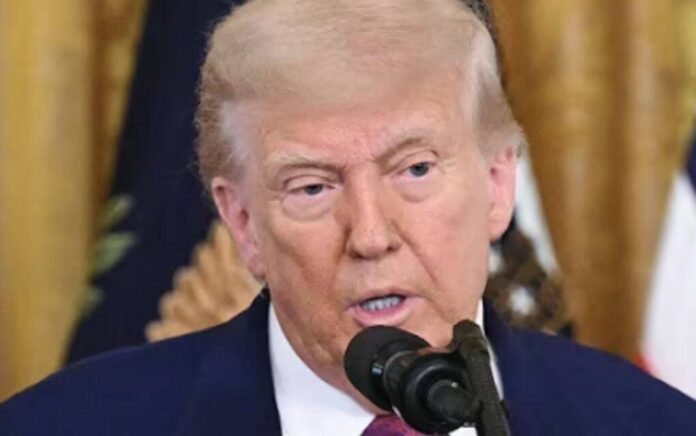
President Trump desperately needed this win. And now he’s got it.
As a groundbreaking court ruling gave Trump a victory he’ll never forget.
A federal appeals court has stepped into a heated dispute, allowing thousands of National Guard troops to remain in Los Angeles to address anti-ICE protests. The decision, handed down by a 9th Circuit panel on Thursday, temporarily halts a lower court’s ruling that sought to return control of the Guard to California’s state government.
The US Court of Appeals for the 9th Circuit issued an administrative stay just hours after San Francisco US District Judge Charles Breyer ordered President Trump to “return control” of approximately 4,000 National Guard members to Governor Gavin Newsom. Breyer’s ruling came in response to Newsom’s lawsuit challenging the federal government’s deployment of the Guard to protect immigration enforcement operations in Los Angeles. The appeals court’s stay ensures the Guard remains under federal control at least until a hearing scheduled for Tuesday.
The 9th Circuit panel, composed of two Trump-appointed judges and one appointed by President Joe Biden, acted swiftly after the Trump administration filed an emergency appeal. The appeal followed Breyer’s decision, which allowed Newsom to retake command of the Guard by 3 p.m. ET Friday.
A Clash Over Authority
The legal battle hinges on the balance of power between federal and state governments. In his ruling, Judge Breyer argued that President Trump’s deployment of the National Guard was unlawful. “At this early stage of the proceedings, the Court must determine whether the President followed the congressionally mandated procedure for his actions. He did not,” Breyer wrote. “His actions were illegal — both exceeding the scope of his statutory authority and violating the Tenth Amendment to the United States Constitution. He must therefore return control of the California National Guard to the Governor of the State of California forthwith.”
Breyer sharply criticized the president’s actions, stating, “That’s the difference between a constitutional government and King George.”
Governor Newsom celebrated the initial ruling as a victory for democratic principles. “I’m gratified by the order. By [Breyer’s] decision. Today was really about a test of democracy and today we passed the test — we the people passed the test,” Newsom said at a press conference. He dismissed claims of an “invasion” or “rebellion” justifying the Guard’s deployment, calling them “absurd.” Newsom warned, “Donald Trump better abide by these orders or we have a constitutional crisis the likes of which we haven’t seen in our lifetime.”
The Federal Response
The Trump administration, represented by Brett Shumate, head of the Justice Department’s Civil Division, defended the deployment during a contentious 70-minute hearing. Shumate argued that the president, as commander-in-chief, had the authority to federalize the Guard through California’s adjutant general, with Newsom serving merely as a “conduit” in the chain of command. “There’s no consultation requirement, pre-approval requirement,” Shumate asserted. “There’s one commander-in-chief of the armed forces.”
The administration cited a statute allowing the president to activate the National Guard in cases of foreign invasion, rebellion, or when local law enforcement cannot uphold federal laws. Shumate claimed Trump’s discussions with Newsom about the Los Angeles situation satisfied procedural requirements, a point Newsom vehemently disputed. The governor called Trump “a stone-cold liar,” insisting the president “never once” mentioned the Guard deployment during their conversation. “He never discussed the National Guard, period. Full stop,” Newsom said, alleging he learned of the decision via a social media post referencing “Governor Newscum” — a jab he noted was unoriginal, recalling childhood taunts.
A Legal Debate
The California Attorney General’s Office, representing Newsom, warned that upholding Trump’s actions could set a dangerous precedent. “The president, by fiat, can federalize the National Guard and deploy it,” said Nicholas Espiritu, California’s supervising deputy attorney general, “whenever there is disobedience to an order.” Such a move, he argued, would leave “no guardrails” to prevent executive overreach.
While Breyer questioned the National Guard’s deployment, he appeared less certain about challenging Trump’s order to send approximately 700 US Marines to assist with immigration enforcement in California. “I don’t understand how I’m supposed to do anything with the Marines, to tell you the truth,” Breyer remarked, questioning whether their involvement violated the Posse Comitatus Act.
Newsom suggested Breyer was awaiting evidence of the Marines’ actual deployment before ruling further. “There’s been a lot of rhetoric from Pete Hegseth, that’s his name, that they’ve ‘been deployed,’ but it doesn’t appear they have been, but they are making you believe that,” Newsom stated.
Historical Precedents
The Justice Department, in a brief filed before the hearing, drew parallels to past presidential actions. “Courts did not interfere when President [Dwight] Eisenhower deployed the military to protect school desegregation [in 1957]. Courts did not interfere when President [Richard] Nixon deployed the military to deliver the mail in the midst of a postal strike [in 1970]. And courts should not interfere here either,” the brief argued.
As the legal showdown continues, the 9th Circuit’s upcoming hearing will likely shape the outcome of this high-stakes conflict, with implications for the balance of power between federal and state authorities.
Stay tuned to The Federalist Wire.


